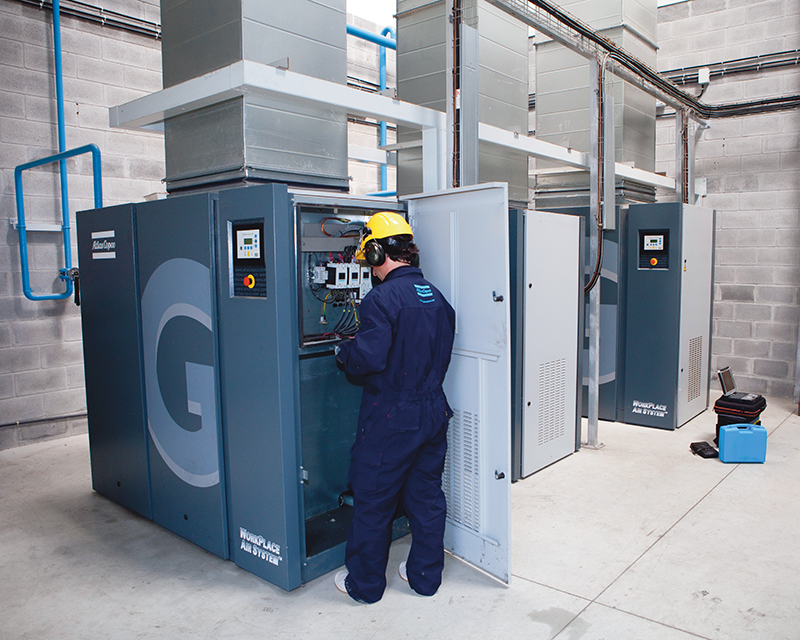Keeping production equipment up and running has always been a challenge. But today’s limited budgets, coupled with the large-scale retirement of knowledgeable maintenance techs and a shortage of skilled workers, make it nearly impossible to inspect every machine on the plant floor. Fortunately, a new generation of condition monitoring sensors can simplify the job by providing real-time data on the health of critical assets so that maintenance techs are aware of and can address any issues before they result in catastrophic failure.
This blog will highlight how using a new generation of condition monitoring sensors assists with predictive maintenance efforts to help manufacturers minimize failure and maximize uptime.
What is Condition Monitoring?
Condition monitoring is a maintenance strategy in which equipment is inspected on a routine basis to identify potential issues before they cause failure. Condition monitoring typically measures specific variables such as machine vibration and temperature because changes or abnormalities in certain measurements usually indicate that the equipment may soon experience a breakdown.
Traditionally, condition monitoring was performed manually by experienced maintenance technicians who made rounds on critical equipment, recorded the results and then used maintenance software programs (or their own in-depth knowledge of and experience with the equipment) to trend the information.
Advanced Sensors for Condition Monitoring
Today, advanced condition monitoring sensors can be used to collect and analyze machine and asset data in real time, reducing the legwork, time and costs associated with performing manual rounds. Using condition monitoring sensors also improves the accuracy of the collected data and dramatically simplifies the process of identifying potential maintenance issues so they can be addressed before catastrophic failure occurs.
These new multi-functional, intelligent condition monitoring sensors can be used to monitor key assets and provide critical data that can be used to automate manual inspections. Sensors, such as the CMTK plug-and-play condition monitoring sensors from Balluff, can measure multiple variables – including vibration, temperature, humidity and air pressure – using one device.
Advanced sensors can process these crucial variables and supply the desired data to a higher-level system using IO-Link technology. The standardized IO-Link protocol makes the sensors quick and easy to integrate and allows users to tailor the evaluation within the sensor to the specific application.
Using smart condition monitoring sensors with IO-Link makes measured variables and alarm notifications available in real time so that operators and maintenance technicians are aware of any issues as they occur and can plan for maintenance well before failure.
Using Condition Monitoring Data for Predictive Maintenance
Before discussing how to use collected condition monitoring data for predictive maintenance, let’s answer the question: What is predictive maintenance? Predictive maintenance is a proactive maintenance strategy that uses advanced monitoring techniques and data analysis to anticipate upcoming equipment failures and optimize maintenance schedules accordingly.
The goal of predictive maintenance is to eliminate reactive maintenance by identifying abnormal equipment behavior before it leads to breakdowns, thus minimizing unscheduled plant shutdowns, maintenance costs and premature failure of critical production equipment.
Using the information collected from advanced condition monitoring sensors makes predictive maintenance a data-driven approach. Having this reliable, actionable data collected by condition monitoring sensors allows technicians to better prioritize and schedule maintenance activities because it focuses on the actual condition of the equipment rather than relying on a predetermined maintenance schedule as is the way with preventive maintenance.
In addition, using real-time data makes it easier for new, less knowledgeable maintenance technicians to troubleshoot and make informed decisions about repair and maintenance schedules.
4 Benefits of Condition Monitoring-Based Predictive Maintenance
By using real-time, accurate and actionable data collected from modern condition monitoring sensors, maintenance schedules can be optimized based on the true condition of the asset.
Below are four significant benefits of condition monitoring-based predictive maintenance:
- Reduced Downtime: Real-time insight into key variables such as vibration, temperature, pressure and humidity makes visible any anomalies that may indicate potential equipment failure. This not only alerts maintenance technicians to issues before a breakdown happens, but it also allows them to prioritize, schedule and plan for appropriate maintenance activities based on actual equipment condition. By addressing issues in a timely fashion, having parts available and technicians prepared, unscheduled and prolonged downtime can be avoided.
- Improved Reliability: By monitoring the condition of critical assets and using the data to create predictive maintenance schedules, equipment is often better maintained and kept in optimal condition, enhancing the reliability of production machinery and ensuring greater levels of uptime.
- Maximum Productivity: Because condition monitoring-based predictive maintenance promotes reliability and minimizes downtime, equipment is made more available, allowing greater levels of productivity and throughput.
- Reduced Costs: When managed well, condition monitoring-based predictive maintenance allows scheduling of repairs while issues are still minor problems. Optimizing maintenance schedules in this way minimizes instances of complete shutdowns, which are time consuming and costly. In addition to saving money on repairs, replacement and maintenance hours, this also reduces the high cost of production outages, which experts suggest may cost manufacturers anywhere from $40,000 to more than $2 million an hour in lost productivity, depending on the industry.
Advanced condition monitoring sensors provide users with data-driven, actionable insight into the health of critical assets. This information can be used to optimize predictive maintenance schedules, which promotes uptime and productivity, and minimizes equipment failures, production outages and high maintenance costs associated with equipment failure, repair and replacement. To learn more about how Balluff’s condition monitoring sensors can help encourage a predictive maintenance strategy in your facility, please reach out to the experts at HTE.


